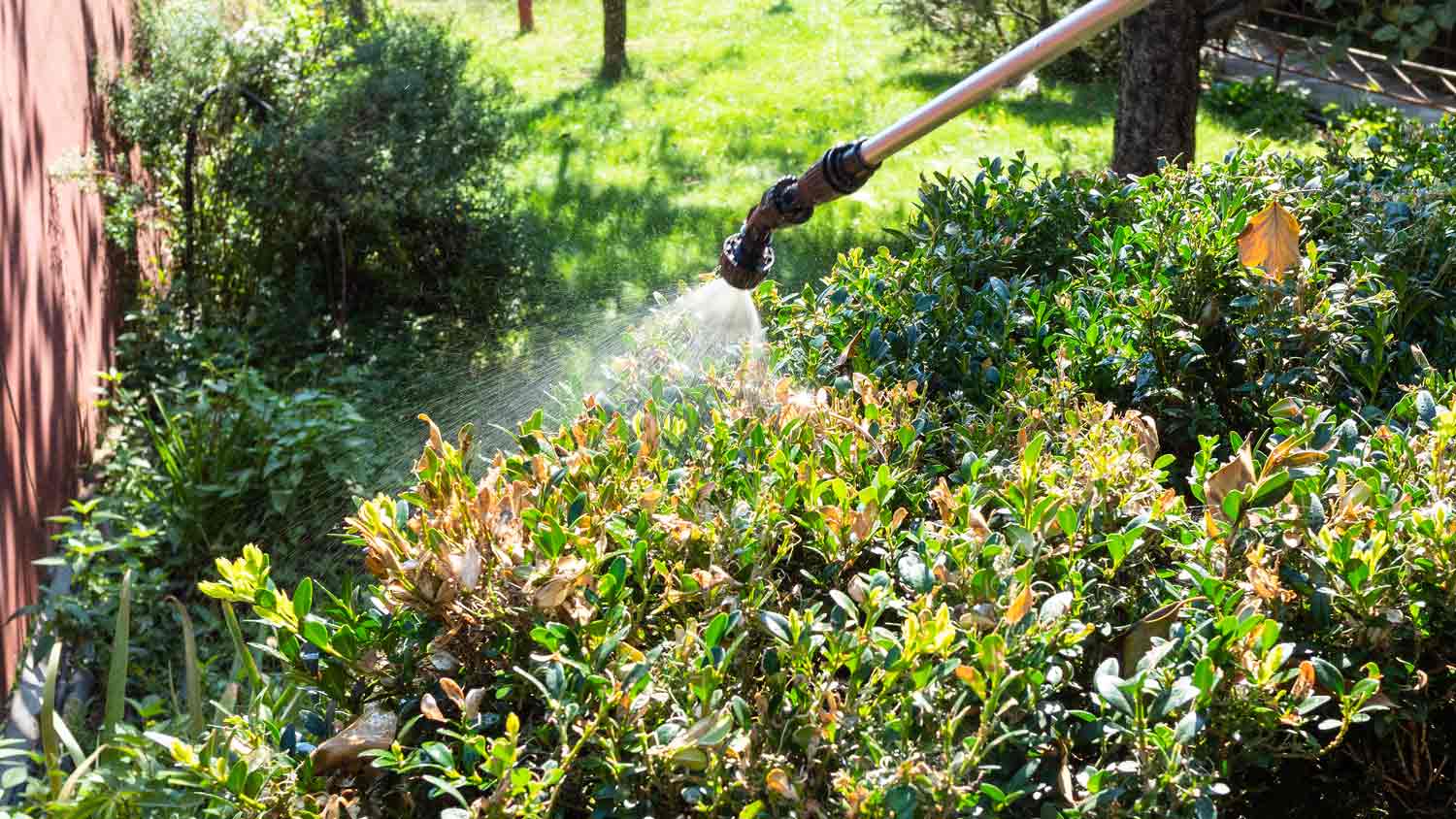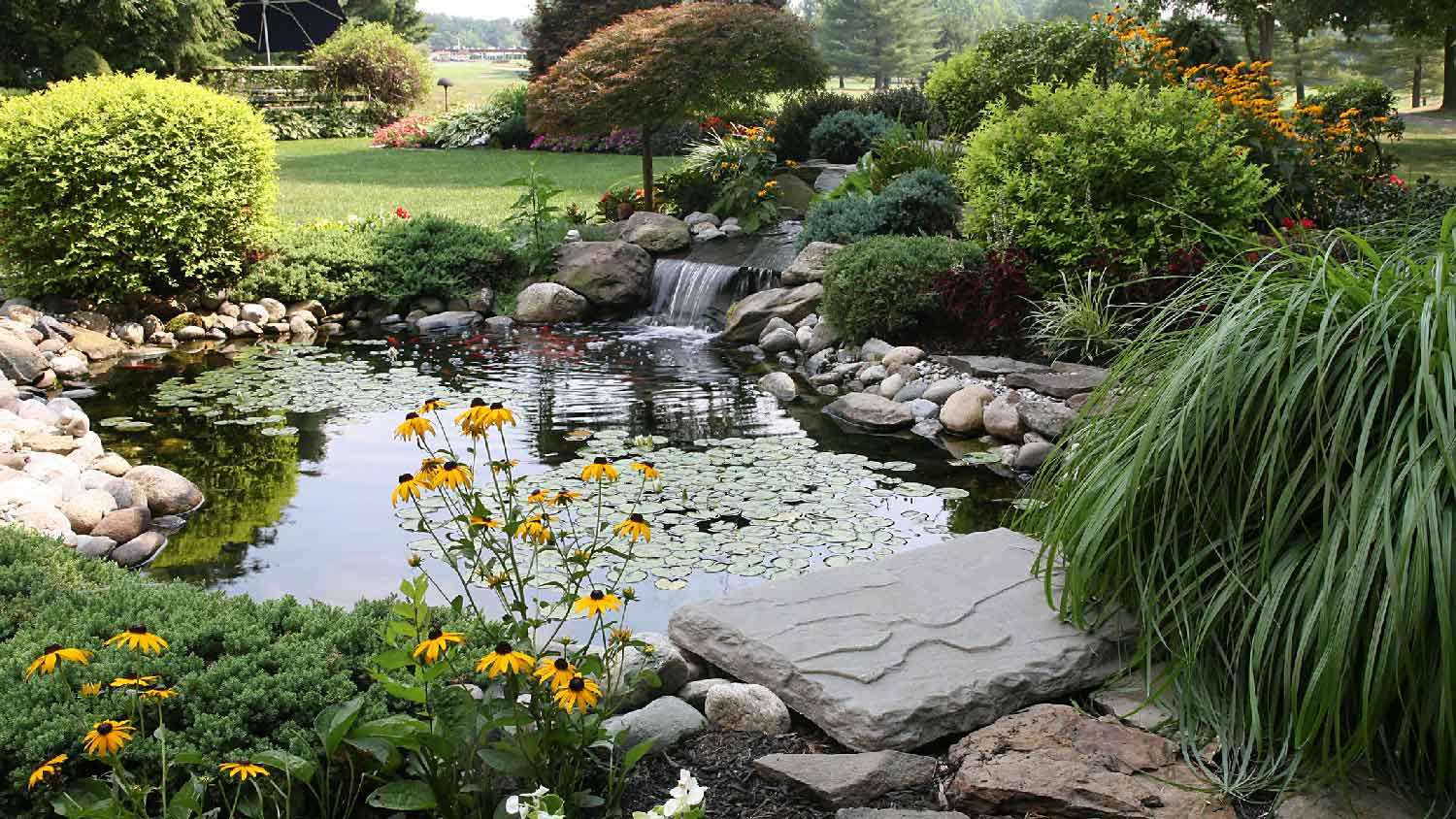
We break down the cost to remove bamboo, which is slightly higher than other forms of tree removal. It's a difficult DIY task because of bamboo's hardy underground roots.
Get rid of that pesky bush once and for all


Landscaping is a never-ending battle of removing what you don’t want and cultivating what you do. When an unwanted weed comes in the form of a thick, stubborn, and deep-rooted shrub, manual removal can feel incredibly difficult or downright impossible. So, what kills bushes instantly? Luckily, a few alternatives don’t involve the intense labor of digging it up by the roots. Let’s take a look at some of the best ways to kill a bush instantly.
Complex, high-risk projects demand more than typical DIY projects. They require time, specialized tools, and trained expertise to make sure the job is done safely and correctly. We made it easy for you to find a local pro—with our skilled network, you'll get the job done without the stress of doing it yourself or significant safety risks.
Like many other types of noxious weeds, shrubs often regenerate due to remaining roots or incomplete removal. It's crucial to eliminate the entire root system to prevent regrowth, but when dealing with a heftier plant with deeper roots, it’s a lot easier said than done. Even if you hack it down to the ground, it will continue to grow back as long as it has roots. Getting rid of a bush for good involves either destroying the roots or completely digging them up, and there are ways to do both.

Learning what kills bushes instantly is very similar to learning how to kill a tree. Here are a few of the most effective ways to do it.
Several natural and chemical herbicides will kill a bush, such as glyphosate, vinegar, and salt. To use them, trim your bush as low to the ground as possible and drill holes in the remaining stems that are at least one inch deep. Then, pour your herbicide of choice into the holes. To speed up the decomposition of the remains, finish with a layer of store bought or homemade compost.
Note that the remaining soil may not grow new plants for a while, so consider decorating with rocks, starting a container garden, or adding a raised garden bed if you want to fill the gap.
The steps for how to burn a stump can also apply to burning a bush. Drill holes in the branches, add kerosene, then light it up from the base with kindling (do not add additional fuel). Never leave the fire unattended, and be ready with a hose or a fire extinguisher to keep it under control. Always exercise proper precautions before attempting this method—do not burn around any flammable structures or materials, and verify that it’s legal to do so in your area.
Bushes need sunlight like any other plant, so you can kill them relatively quickly by depriving them of it. Start by trimming the bush down as much as you can, then fully cover it up with thick, black plastic bags or a heavy-duty tarp. Put heavy objects such as bricks, cinder blocks, or upturned flower pots to hold the bag in place. It may take a few weeks, or possibly over a month, but the plant will eventually die.
Preventing unwanted bushes (and weeds) involves a few strategies:
Conduct routine checks in your yard to identify and dig up any small bushes or saplings before they grow too big.
Apply mulch to garden beds to inhibit the growth of unwanted plants.
Regularly prune surrounding bushes and vegetation to prevent the growth of unwanted plants.
Whenever you notice any unwanted bushes sprouting, promptly remove them, including their roots, to prevent further growth.
While DIY methods can effectively kill a bush, larger or more stubborn shrubs might require professional assistance. Consider the scale of the task and whether hiring a local landscaping professional could be more efficient and worthy of the extra investment. You can hire out for one-time removal or set up a preventative schedule to ensure your property stays free of pesky plants you don’t want. Keep in mind that professional shrub removal costs $450 to $1,375, depending on the type and size of the plant. When hiring a professional landscape team to remove your unwanted bushes, provide them with specific details like the number of bushes and their size and type to get an accurate estimate.
From average costs to expert advice, get all the answers you need to get your job done.

We break down the cost to remove bamboo, which is slightly higher than other forms of tree removal. It's a difficult DIY task because of bamboo's hardy underground roots.

A landscape designer can elevate your outdoor space and bring your vision to life. Use this landscape design cost guide to budget for your next project.

How much does hardscaping cost project by project? Check out our breakdown for every price tag you need to know, from outdoor fireplaces to patios.

How big is your pond? Knowing how much water your pond can hold will help you choose the right treatments for it and the proper number of aquatic life.

Looking to install synthetic grass for a putting green or play area? Learn what artificial turf questions you’ll need to discuss with your professional installer before you get started.

There is no one-size-fits-all retaining wall for your yard. In fact, the options are endless. Check out 20 retaining wall ideas to upgrade your hardscape.